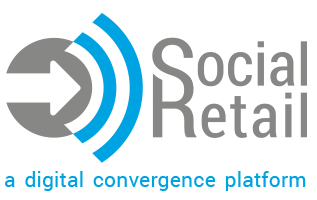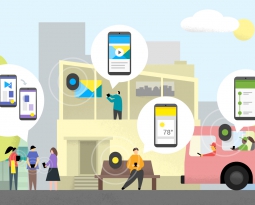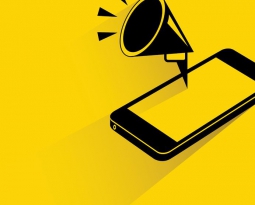Proximity marketing is appealingly low-tech when considered in isolation. Each beacon device typically costs less than $15 and operates by generating a tiny data signal. This capability is being harnessed along with much more powerful and exciting technology like smartphones and digital signage displays.
Wearable technology promises the next step in this evolution. With the release of the Apple Watch and Google Glass, the futuristic interactivity we once imagined is practically here. As a society, we have now made the leap from having a computer in our pocket to having one on our wrists, our faces, our fingers and even inside our shoes. These devices hold the potential to deliver contextual experiences that make marketing emotional, personalized and one-of-a-kind.
The Apple Watch as the Trailblazer
As of the moment of writing, the Apple Watch is the most widely-known and marketable wearable device on the planet. Its release is poised to carve new pathways towards the transition from smartphone interactions to wearables. Sales figures have not yet been disclosed, but market response has been largely positive and excited.
This enthusiasm spells a sunny outlook for the adoption rates of wearable tech and proximity marketing engagement. One of the biggest barriers to beacon interactions and proximity marketing in general is the friction between allowing consumers to opt in. Consumers also have to have their smartphone out of their pocket at all times in order to view the beacon messages and alerts.
The Apple Watch eliminates many of these barriers by having messages and information displays at less than arm’s reach away. Customers can glance at their wrists to view their updates or to interact with beacons, such as requesting assistance or checking the back stock of inventory on an item. Functions like these bring proximity marketing engagement closer than ever to users, making it accessible and appealing in a way that encourages heavier use.
Google Glass as the Potential Game Changer
Google Glass was being hyped long before the Apple Watch was merely a rumor. The reality when the product was released was a technology very much in the “beta” stages. Early adopters are helping Google resolve sticking points and hopefully develop a more consumer-friendly version of Google Glass that meets with the general public’s futuristic expectations.
As it stands now, though, Google Glass still has an impressive bevy of features and could see more usefulness as time goes on. Augmented reality has perhaps the biggest potential of any of these uses, allowing wearers to visualize prices, offers and ads for beacon-enabled product displays. Wearers could also receive turn-by-turn directions for locating products, or they could see product suggestions based on their previous buying history.
For the time being, Google Glass has a lot of kinks to iron out — including a prohibitively-expensive price point — before it will be revolutionizing proximity marketing. Display-enabled wearable devices like these hold nearly infinite possibilities as they are refined over time.
Other Wearables
Hundreds of companies are trying to capitalize on the buzz wearables have been able to generate. A company called Lineable is offering $5 beacon bracelets that are currently pitched as child locating devices, but later they could flip the positions with the beacon on the customer and the computer in a fixed location tracking consumers as they move about the retail space.
Another exciting entry is the Fin thumb ring that promises to simplify device interactions with gestures rather than hand presses. Customers could potentially use wearables like these to control interactive displays with hand motions or call for help with a simple hitchhiking motion.
Finally, companies like Skully are trying to make good on some of the promises offered by tech like Google Glass. The bulkier form factor of a helmet allows them to integrate display right into the visor along with a rearview camera. Skully’s current helmet generates a heads-up display that shows the rider’s speed and can also give a quick rear view in a corner window. The helmet can even answer phone calls similarly to the Apple Watch.
Ambitious marketers can harness heads-up displays like these to broadcast 3D display ads when a rider stops at a stoplight or passes near a particular storefront. These types of applications are mere pipe dreams at the moment, but with developments accelerating as they are it could be a reality within a few short years.
Retail brands that want to utilize the power of Apple Watches and other compatible wearables immediately can do so with a simple-to-use software platform from Digital Social Retail. Our product makes managing customer touchpoints like beacons and loyalty program engagement a breeze, and you can even do it from anywhere in the world thanks to our cloud technology.
Visit our product page to discover more about how Digital Social Retail can help you ride the wave of wearables into the future.










